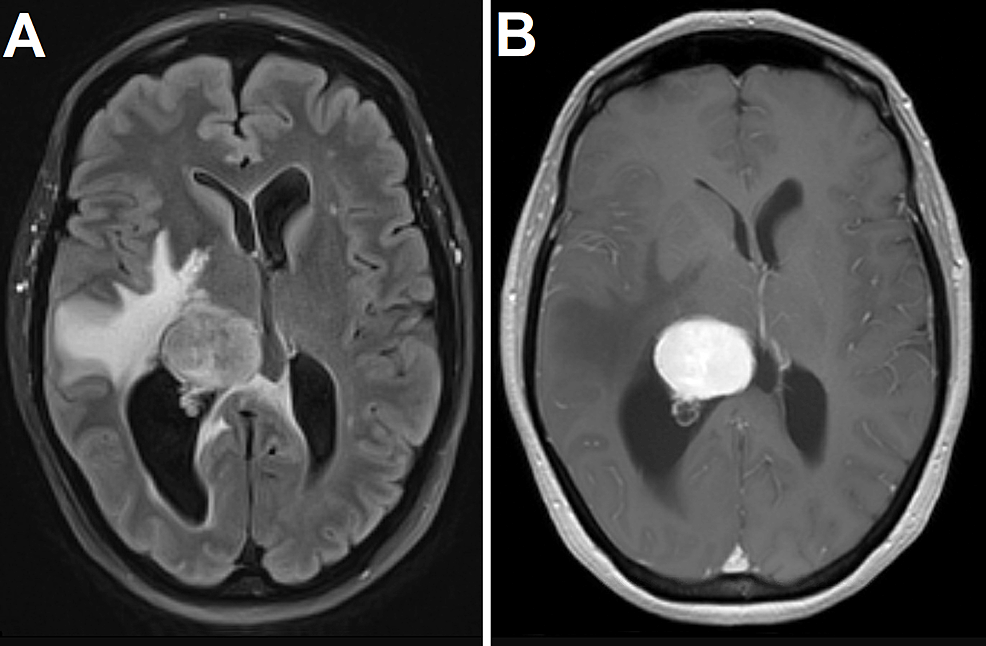Solitary fibrous tumors (SFTs) are rare tumors thought to be of mesenchymal origin. Even though intracranial, especially intraventricular, SFTs are rare, this diagnosis should be considered in the differential for intraventricular lesions. Here, report the case of a female in her 60s who underwent a non-contrast-enhanced magnetic resonance imaging scan of the brain for new-onset memory issues and headache which revealed a well-circumscribed intraventricular lesion in the right lateral ventricle with vasogenic edema, trapping of the temporal horn, and subfalcine herniation. She was admitted and started on dexamethasone prior to surgical treatment of the tumor. A right-sided superior parietal lobule approach was utilized to reach and resect the lesion. Histopathology was consistent with World Health Organization grade I SFT. Only 10 other cases of lateral ventricular SFTs have been reported in the literature. Intraventricular SFT is a rare diagnosis, and, as such, the literature on this topic mostly consists of case reports. Although the lesion is benign, metastases have been reported, and thus, gross total resection remains the standard of care. This case adds to the paucity of SFTs reported in the literature.
Introduction
Solitary fibrous tumor (SFT) was first pathologically characterized in 1931 by Klemperer and Rabin [1]. Since then, advances in molecular biology and sequencing have allowed clinicians and researchers to discover that SFT encompasses tumors previously known as hemangiopericytomas (HPCs) [2]. As such, the term HPC has been retired by the World Health Organization (WHO), but the term “HPC phenotype” is often used to describe WHO grade II and III SFTs. Additionally, SFT/HPC is a term often used in the literature given the extensive use of the term HPC in the past.
Intracranial SFT is an uncommon diagnosis, and these tumors rarely originate in the cerebral ventricles [3]. SFT is of mesenchymal origin, and common differential…

